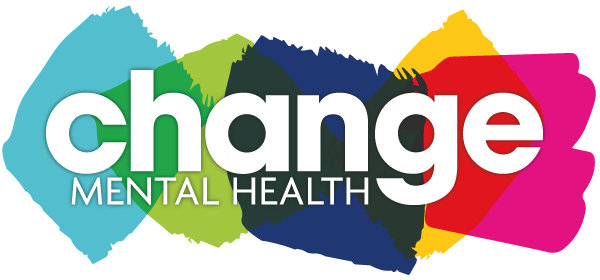grounding techniques
learn how to use simple strategies to help manage anxiety, stress or overwhelming emotions by focusing on the present moment
Grounding techniques can help you reconnect with the present moment, especially when you’re feeling anxious, stressed or overwhelmed. These are simple, practical tools that use your senses, movement and focus to calm your nervous system and bring you back to ‘now’.
Grounding can also improve focus and clarity when your thoughts feel scattered or your stress levels are high. When practiced regularly, these techniques can improve your mental health and overall wellbeing.
myths about grounding techniques
there is no scientific evidence for grounding techniques
Many studies show that grounding techniques are an effective tool to help with a variety of mental health issues.
grounding techniques are too simple to be effective
Despite their simplicity, grounding techniques are powerful tools. Their effectiveness lies in their ability to quickly redirect focus and calm the mind and body.
how grounding supports mental health
Grounding techniques are an important part of maintaining mental health. Practicing grounding daily can prevent stress and tension from building up, while also improving your overall sense of balance and mental clarity. These techniques provide immediate tools for managing moments of crisis and a variety of mental health challenges.
Different grounding techniques can support specific mental health experiences.
Anxiety and panic attacks
During anxious moments, using techniques like controlled breathing, mental exercises or physical grounding (such as focusing on your feet on the floor) can help reduce racing thoughts and calm your nervous system.
If you feel disconnected from your surroundings or yourself, sensory grounding – like focusing on temperature or texture – can help re-establish presence and awareness.
PTSD and flashbacks
Grounding is widely used in trauma recovery to interrupt flashbacks or hyperarousal. Physical and sensory-based grounding (e.g., holding a cold object or pressing your hands together firmly) can shift your awareness from distressing memories to present safety.
Borderline Personality Disorder (BPD) or Emotionally Unstable Personality Disorder (EUPD)
When emotions feel too intense to manage, grounding provides a moment to pause before reacting. Activities like listening to music, stretching or slow movement can reduce impulsivity and support emotional regulation.
Urges related to self-harm or disordered eating
Grounding can interrupt overwhelming urges by using strong sensory inputs or focused breathing to redirect attention and reduce impulsivity. These techniques offer a moment of choice before acting on the urge.
It’s important to remember that grounding techniques are not a primary treatment for mental illness and should never be used in isolation. They’re most effective as part of a broader support plan, ideally alongside professional help.
types of grounding techniques
There are different types of grounding techniques that you can try. Some that you might want to consider are:
Physical grounding
- Touch something: Hold onto a piece of fabric, a smooth stone or another tactile object. Feel its texture and describe it in detail.
- Walk barefoot: Feel the ground beneath your feet. If possible, try to go outside, as the environment has a great effect on your mental health. Notice the sensation of grass, carpet, or whatever surface may be beneath you.
- Hold a warm or cold object: Hold an ice cube or a warm cup of tea. Focus on the temperature and how it feels in your hand.
Mental grounding
- Describe your environment: Look around and describe what you see in detail. Name objects, colours, shapes and textures.
- Count things: Count backwards from 100 or count the number of items in a category (e.g. count blue objects in the room).
- Recite facts: Recite facts about yourself or the world. For example: your name, age, address or the capital of your country.
Breathing techniques
- Deep breathing: Take slow, deep breaths. Inhale deeply through your nose, hold for a few seconds and exhale slowly through your mouth.
- 4-7-8 breathing: Inhale for a count of 4 seconds, hold your breath for 7 and exhale for 8.
Movement-based techniques
- Stretch or exercise: Perform a simple stretch or engage in light exercise like walking or jumping jacks.
- Dance: Put on music and let yourself move to the beat. Focus on how your body feels as it moves.
making grounding work for you
Whatever technique you use, make sure to remember these when using grounding techniques:
Practice regularly: Like any skill, grounding becomes more effective with regular practice.
Find what works for you: Different techniques work for different people. Experiment to find the methods that are most effective for you.
Stay patient: It might take a few tries to find the best technique for a particular moment. Be patient with yourself as you learn what works best.
Connect with nature: Even a few minutes outdoors or near a plant can be grounding. Notice the colours, sounds or breeze.
Use technology mindfully: Apps or audio recordings can be helpful but tune into your own needs first.
support
Our National Advice and Support Service can help you and people you care for with mental health concerns and money worries.
We can link and signpost you to relevant local and national support, including our own Change Mental Health services, as well supporting with debt, grants and benefits.
The service is open Monday to Friday, 10am to 4pm (closed for lunch between 12.30pm to 1.30pm). Contact 0808 8010 515, email advice@changemh.org or fill in the form on the service webpage.
For full details about the service, visit the National Advice and Support Service webpage.


